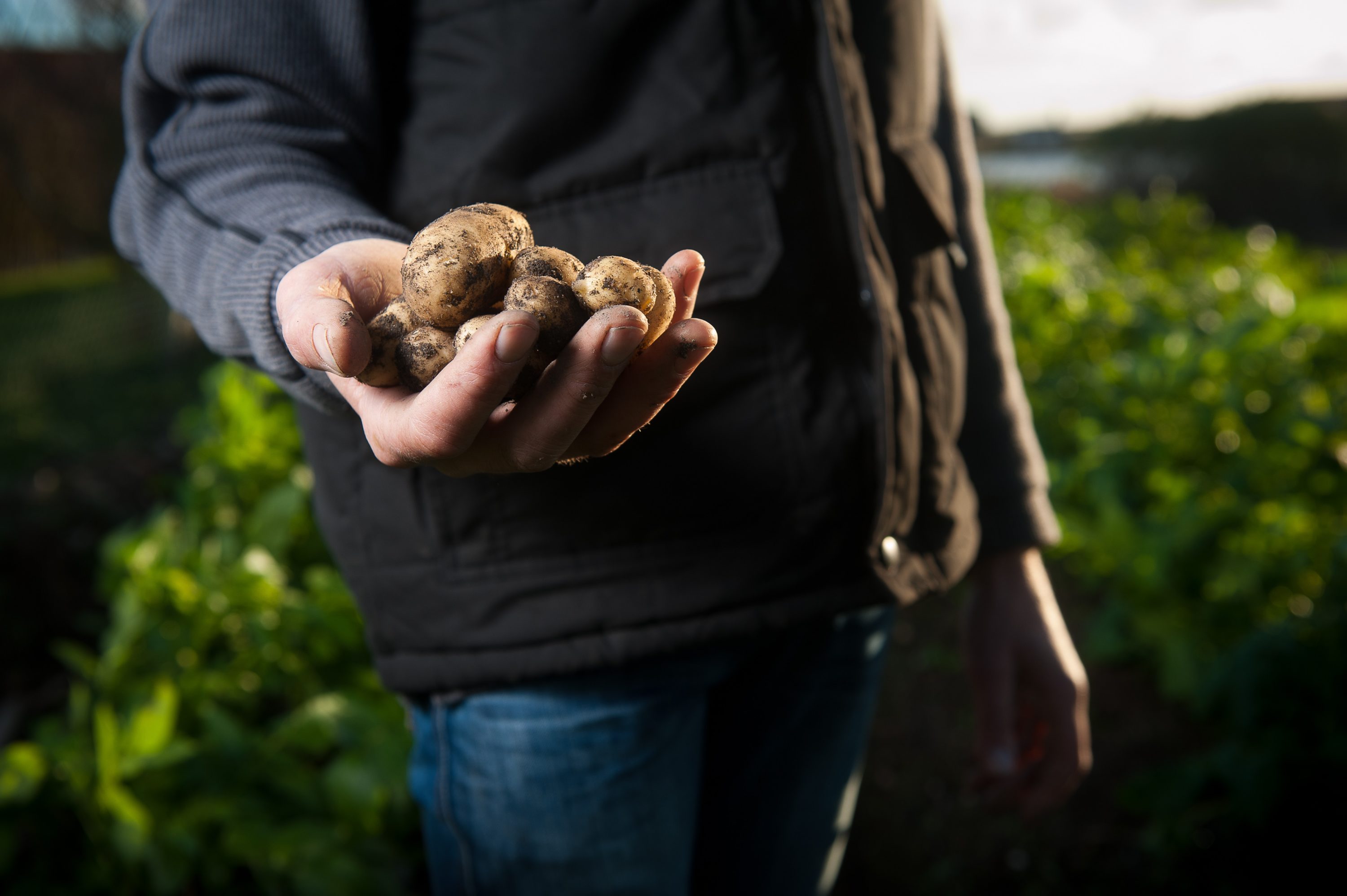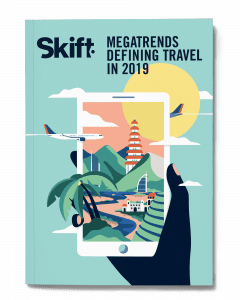Restaurant Megatrends 2019: Blockchain Brings Transparency to Sourcing… If Restaurants Care

Photo Credit: A man holding potatoes on a farm. Raw ingredients can be better traced back to their source using blockchain technology. Unsplash / Agence Producteurs Locaux Damien Kühn
Skift Take
Blockchain has the potential to massively aid in identifying issues along a supply chain, but its real world applications are still being tested and validated, and large scale impacts still stand to be seen.
We’ve just released our annual industry trends forecast, Skift Restaurant Megatrends 2019. You can read about each of the trends on Skift Table as well as download a copy of our magazine here.
It’s likely that you first heard the term “blockchain” in a context associated with cryptocurrency or someone using it as a buzzword to sound like they were being innovative. But the potential applications of this particular approach to documentation and recordkeeping aren’t limited to digital currency, nor should they be.
For the uninitiated, blockchain, also known as Distributed Ledger Technology (DLT), is, at its core, a shared, digital public record of activity. A “block”, or piece of digital information, is verified and added to a “chain”, creating a linearly and chronologically linked series. Editing a single block would, inherently, require editing all blocks that preceded it, which, based on the process through which each block is created, would be an incredibly challenging undertaking. And so the emerging technology of blockchain aims to record and distribute digital information that’s difficult to edit, making it more secure and reliable by the very nature of its design.
This technology could be revolutionary in any realm where traceability, documentation, and accountability are valued, which is any kind of business that records information digitally, really. More secure data sharing could positively impact myriad contexts, including banking, health care, real estate, and supply chains. And it’s the last of those that’s particularly relevant to restaurants.
In the absence of standardized definitions for buzzwords like “sustainable,” “local,” or “ethical” that make a restaurant’s offerings appealing to customers, radical transparency can be the thing that makes a brand successful. The ability to trace the exact origins of an ingredient between the time of its sourcing and the time of its consumption could, conceivably, be achieved with a robust enough system, satisfying consumers’ desire for information. In addition to addressing consumer preferences, this improved life cycle tracking could also significantly impact food safety.
Health and Safety Made Easier
In 2018, the Centers for Disease Control issued 23 warnings for pathogens in items ranging from romaine to tahini. Once a possible multi-state outbreak is detected, the governmental organization conducts a public health investigation to determine the source of the outbreak. As a Bloomberg Intelligence report elucidated, blockchain could help “discover the source of a food-borne pathogen, be it a contaminated farm or a broken refrigeration unit.”
If detailed enough recordkeeping is an automatically integrated aspect of the supply chain, the hope is that these pathogens could be more easily identified and the products containing them more quickly and efficiently removed, helping to avoid the financial costs associated with an outbreak, while also minimizing lost trust in consumer brands.
It’s anticipated that blockchain could also call attention to illegal practices like unregulated fishing or food fraud, where, Fast Company explains, “suppliers might add something to food to lower their costs … estimated to cost the industry $10 billion to $15 billion a year.”
Several companies have already embraced blockchain enabled “track and trace” tech with these different goals in mind. HarvestMark, a “seed-to-table service,” is committed to building brand loyalty through transparency. FoodLogiQ, the choice for such clients as Whole Foods, Subway, Five Guys, and Chipotle, is another player committed to tracking food and gathering and analyzing data accordingly. Startups like Clear Labs, Ancera, and SnapDNA, meanwhile, aim to detect viruses and bacteria on site, identifying pathogens “in just hours and accelerating a process that typically takes weeks.”
As an emerging technology, though, blockchain faces challenges if it’s to be viable across organizations and industries as a whole. There’s understandably still resistance to blockchain as, QSR explains, it’s associated with “highly volatile virtual currency” because it was initially launched alongside crypto. And if enough companies haven’t adopted it, then the idea of a shared network becomes less valuable.
Not only does blockchain’s maximum potential efficacy in managing food supply chains require widespread participation, it also requires honest and accurate participation. A decentralized approach to data management yields greater reliability overall, but there’s still room for human error. And, as The New Food Economy explains, recording the movements of tangible items that themselves can’t be digitized creates points of failure along the chain that don’t exist when dealing with digital assets.
There’s also the issue of interoperability and scalability. Fast Company explains, “for legacy food companies, supply chain transparency is a daunting task, complicated by a vast number of suppliers, plants, distributors, and products. Different producers use different tagging systems and different sensors to track different things. Piecing together the details of what comes from where and goes where from seed to table” is admittedly challenging. The question of how systems developed by one firm might work with those of another remains to be seen.
As reported by CB Insights, “companies will look to see whether DLTs can help them make any efficiency gains that give them an overall edge.” An interview with QSR earlier this year perhaps summarizes it best: Juan Guerrero, senior VP and chief global supply chain officer for Bloomin’ Brands, explains, “For us, it’s really a question of data quality, low-cost interfaces, and an application layer underneath that’s about security more than anything else… The scope of it is really narrow… It’s very early.”
Download Your Copy of Skift Megatrends 2019

Skift Table contributor Ally Spier is a Brooklyn-based writer and designer who studied ergonomics at Cornell, and architecture at Pratt. Her background in design informs her love of food and travel… and vice versa.

The travel industry's top event returns this fall.
September 16-18, 2025 - NEW YORK CITY

